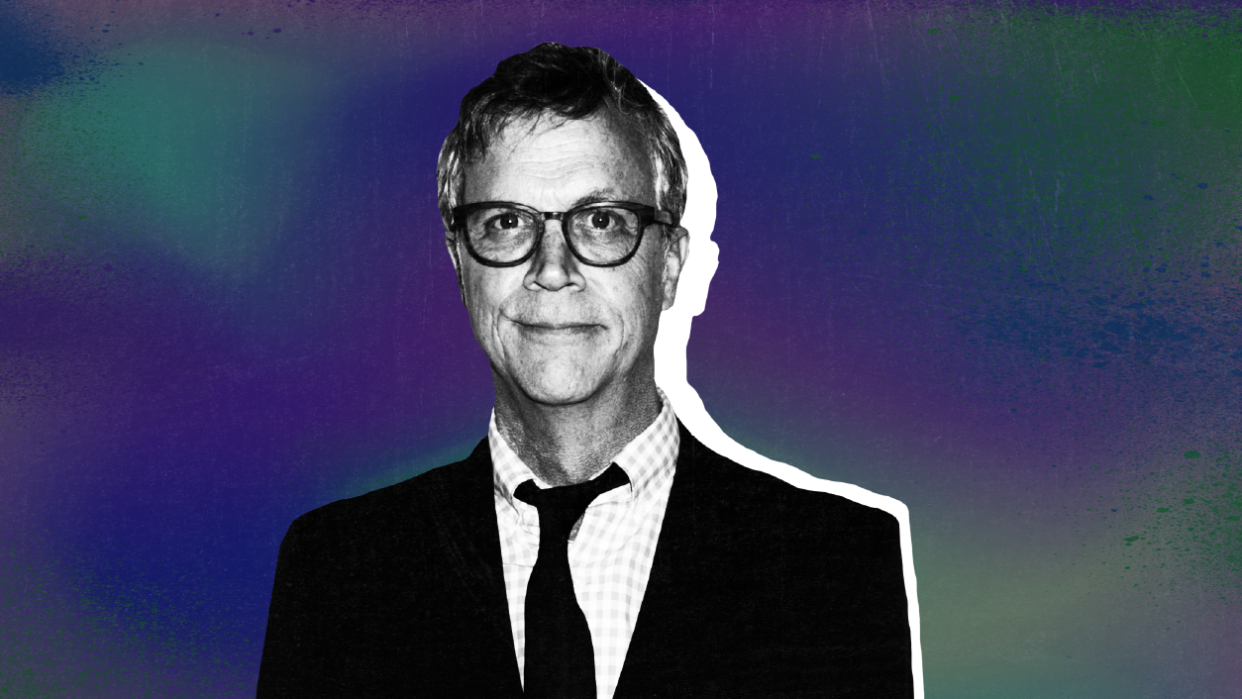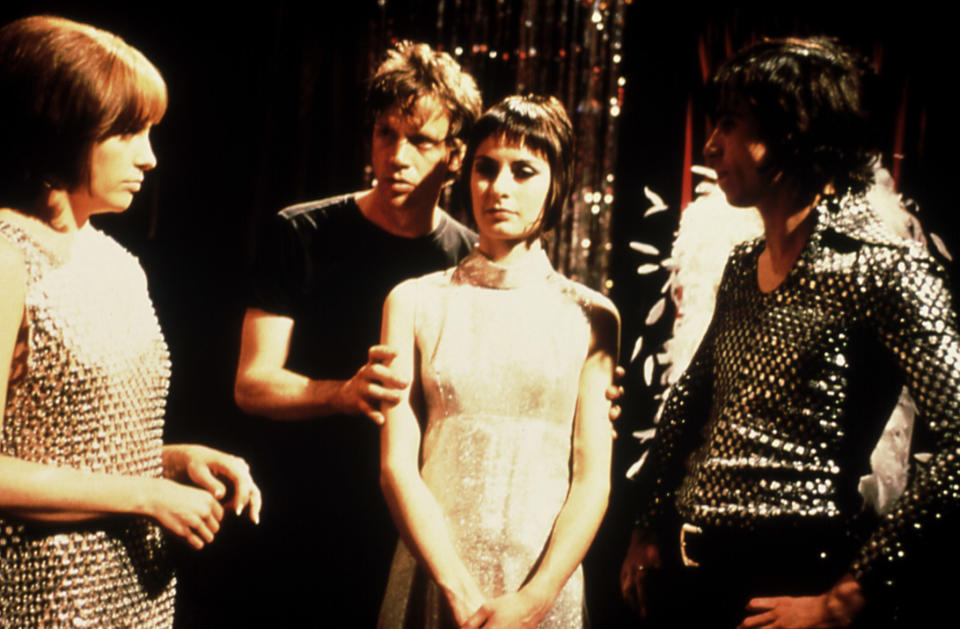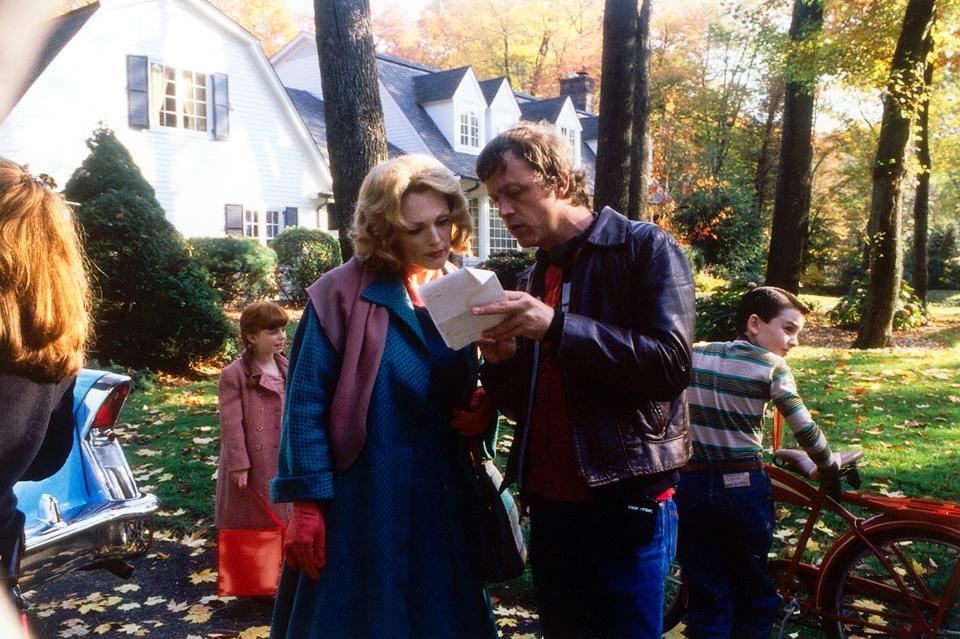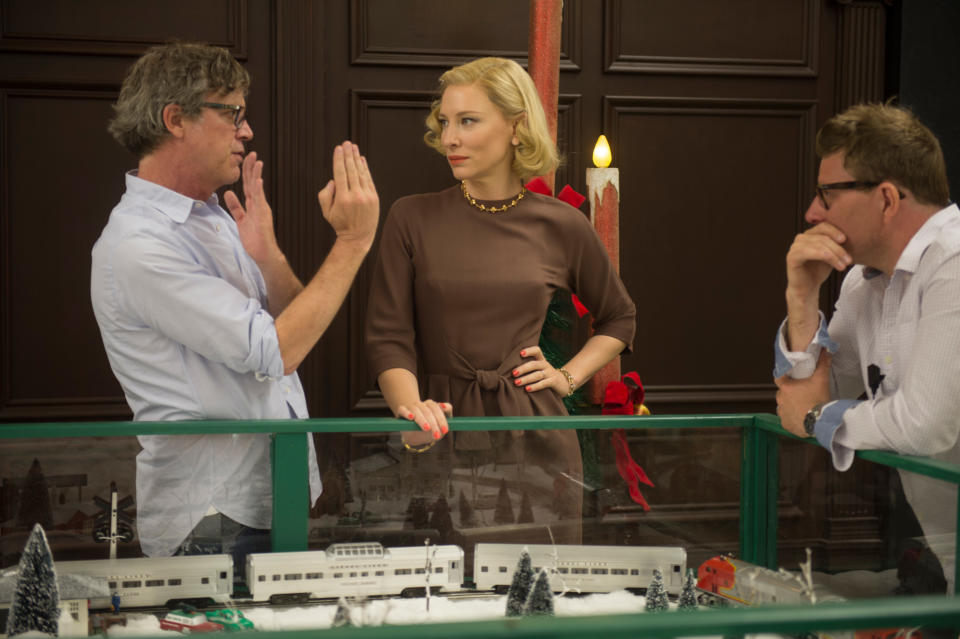Todd Haynes on the Moment He Knew ‘Carol’ Just Might Be an Iconic Film in His Wide-Ranging Career

- Oops!Something went wrong.Please try again later.
- Oops!Something went wrong.Please try again later.
- Oops!Something went wrong.Please try again later.
- Oops!Something went wrong.Please try again later.
- Oops!Something went wrong.Please try again later.
- Oops!Something went wrong.Please try again later.

On December 6, the 2023 IndieWire Honors ceremony will celebrate 11 filmmakers, creators, and actors for their achievements in creative independence. We’re showcasing their work with new interviews leading up to the Los Angeles event.
From Cate Blanchett’s meet-cute hat-tip to shopgirl Rooney Mara in “Carol” and Julianne Moore’s farewell on a train platform to Dennis Haysbert at the end of “Far from Heaven” to, now, Natalie Portman’s straight-to-the-camera monologue as an actress playing an actress who is also playing another role in “May December,” Todd Haynes might not see his images as destined-to-be-iconic while on set as we do on our screens. At first.
More from IndieWire
That’s partly because, for the Oscar-nominated filmmaker upon whom IndieWire Honors will bestow the Vanguard Award on December 6 in Los Angeles, “every film has been a tremendous challenge in terms of resources and time and financing. I’ve always felt that I have the team around me that has the movie’s best interest at hand, and that starts with Christine Vachon,” Haynes told IndieWire, applauding his longtime friend and Killer Films producer for supporting his always-experimental visions.
“That’s played out with the actors I’ve worked with, who are so insanely committed to delivering something and going somewhere they haven’t gone before, and the creative teams I put together, where you really feel like you’re all in the adventure together.”
Haynes said, “In the case of certain productions like ‘Velvet Goldmine’ in London, the ambition of that particular film and its style, and the amount of coverage I needed to do, and the range of looks and costumes and periods and music, all those factors put a particular burden on me emotionally and psychically.”
But you wouldn’t know it: “At the end of the movie, [star] Christian Bale said to Christine, ‘I think I’m pretty sure you guys had a pretty tough time making this movie, but I never felt it in my experience.’ For him, it felt like a party, and that’s exactly what I wanted it to feel like for the actors. So we shouldered a lot of that burden, but I never felt like it was heading for disaster. It was a lot of work, and I just wanted the production to end and get into the editing room.”

Haynes’ technique and sensibility have evolved and his references deepened since 1997’s “Velvet Goldmine” followed up scrappier indies like “Poison” and “Superstar: The Karen Carpenter Story.” Now, following his poetic and even avant-garde-leaning “The Velvet Underground” documentary from 2021, Haynes is back to narrative filmmaking and in the fall conversation once again for “May December.”
Inspired loosely by the inappropriate real-life relationship between teacher Mary Kay Letourneau and her 12-year-old student, the Netflix-released melodrama centers on Portman as a middlebrow actress shadowing Gracie Atherton-Yoo (Julianne Moore). Two decades earlier, Gracie became a tabloid magnet when she struck up a relationship with an adolescent boy, now played in his early 30s by Charles Melton. Now, Portman’s character, Elizabeth Berry, is set to play Gracie in an indie film, and the “Persona”-esque bond between the two women makes for one of Haynes’ juiciest, and some say campiest, leading lady double bill.
Haynes has long collaborated with Moore dating back to his 1995 “Safe,” another unsettling portrait of a housewife looking to break out of her station, but here inexplicably stricken by an unknown illness. Seven years later, they reunited for what would be one of his most radical, and strangely enough most far-reaching films in spite of and because of that, with “Far from Heaven.” The 2002 melodrama directly quotes the style of Douglas Sirk films in telling the story of another housewife, here in the 1950s, up against issues of homophobia and racism in a (literally) pearl-clutching suburban Connecticut.

Haynes knew “Far from Heaven” was “a particular challenge for contemporary audiences of that time and how they might relate to or navigate the language of melodrama that I was trying to really be very faithful to.” But it paid off, as the Focus Features release grossed $29 million globally and earned four Oscar nominations.
In confining himself to such a presumably out-of-fashion cinematic vocabulary, Haynes said, “I found that audiences really did respond to it in all the ways that I hope, both emotionally, but also as a critique about the society in which these people live and the time and place, and comparing the struggles around identity that the three different characters experience. That was a remarkable thing. To me, that just described how the melodrama, when it’s sort of lovingly handled and with the love that I have for it and the respect I have for it, if it can be handled in that way, it actually can still speak to audiences even in a very traditional style like the ‘50s Sirkian vernacular.”
For Haynes, “Far from Heaven” wound up a formative experience in the present even as he dipped back into cinema of the past to create a parable for today’s socially fragmented world. “So many things started with that movie, like my relationship with Ed Lachman, my DP, and Mark Friedberg, who designed ‘Far from Heaven’ [and later worked on his HBO series ‘Mildred Pierce’ and the 2017 film ‘Wonderstruck’]. And ‘Far from Heaven’ was my second time working with Sandy Powell on costume design. It was quite an experience.”

Haynes and Powell first worked together to glam up Jonathan Rhys Meyers as a bisexual British rocker inspired by David Bowie in “Velvet Goldmine.” But we, of course, have Powell to thank for her brilliant hand in the tailoring and texture behind Haynes’ 2015 “Carol,” the 1950s-set New York lesbian romance that’s now arguably his most iconic film. Did Haynes have any idea that film would go on to be the much-memed and oft-quoted masterpiece of queer iconography it is now, eight years later?
He said it means so much for “Carol” to “have this particular afterlife” and to matter “so much to the lesbian communities around the world that it touched, but then to just be a sort of perennial Christmas movie and just the film that people keep returning to.”
Haynes will admit, however, “When we were shooting it, something about the costuming that Sandy Powell did, the look of Therese [Mara’s character], and of course Carol’s look, and the hairstyling, there was something just iconic about them both in the way they contrasted each other as women from this time. You don’t really know. You don’t know how it’s going to turn out, and what it’s ultimately going to be, and if it’ll work or any of those things. But just looking at them, there was something iconic about the way they appeared and I was like, ‘Wow, this feels like it has maybe some legs,’ and that it might be hard to forget the way Cate Blanchett and Rooney Mara appear in ‘Carol,’ however the film came out.”
Best of IndieWire
Sign up for Indiewire's Newsletter. For the latest news, follow us on Facebook, Twitter, and Instagram.

